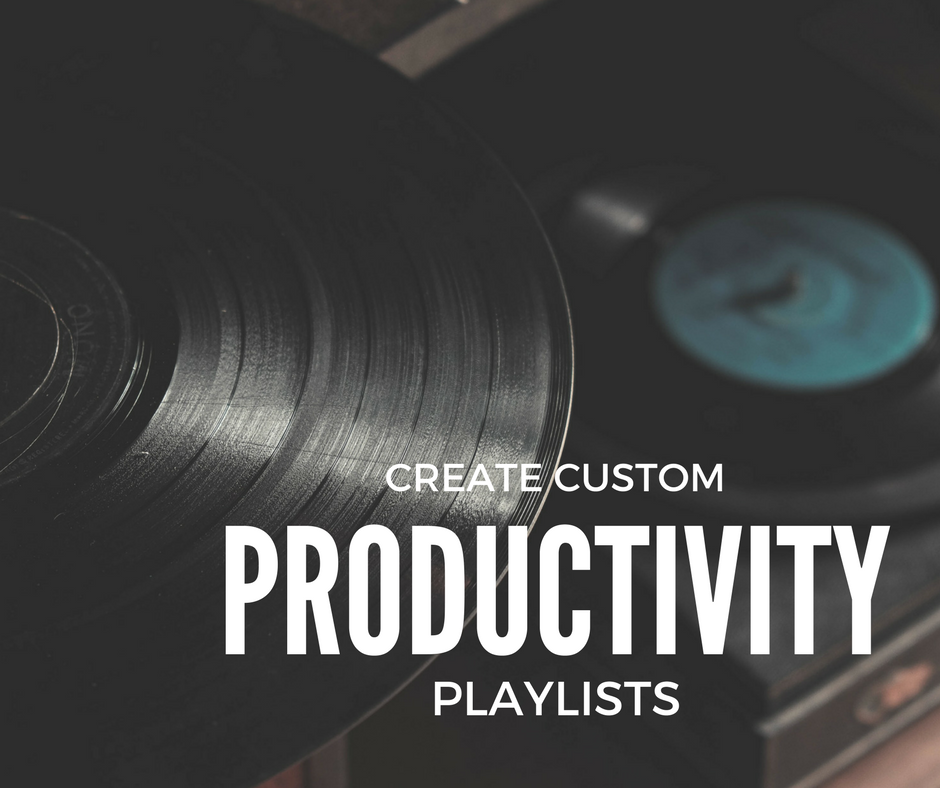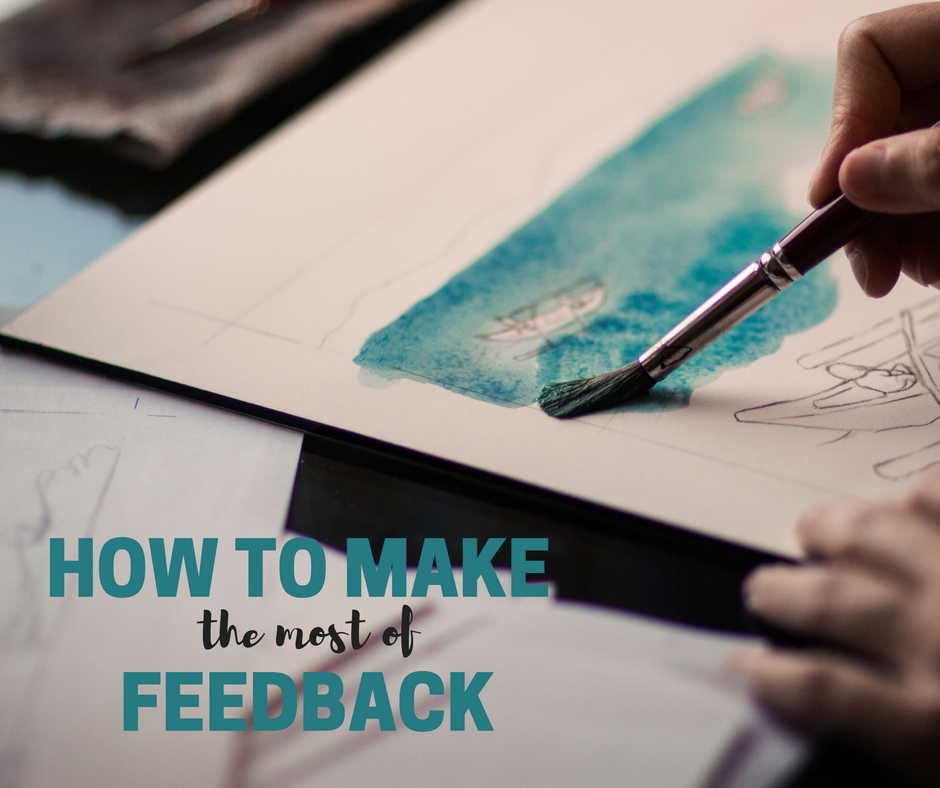by Naomi | Jan 30, 2017 | Writerly Play Activities
Visit the Writerly Play Studio and tap into divergent thinking with this Productivity Playlists activity. Never heard of the WP Studio? Learn how Writerly Play thinking strategies supercharge your creativity here.

Everybody loves a shortcut.
A playlist is not only fun to make. It’s also a creativity shortcut. Why? Sound provides a doorway into mental spaces that are shaped by your memories, your emotions and your internal rhythm. We don’t have to dig into scientific tomes to know this is true. We’ve had the experience of encountering a song we haven’t heard for years and been transported back in time, sometimes so vividly that we can even smell a remembered place.
If you’re interested in the science of how music affects your brain, here is a video you might enjoy: How Music Affects Your Brain
Music is a powerful tool.
That’s why it’s important to use it strategically. For instance, you don’t want to be distracted from today’s tasks with unrelated blasts from the past. That’s why a productivity playlist is an excellent solution. If you curate music for specific tasks, rather than being distracted, you’re transported into the exact environment you need.
A caveat: There is definitely some research out there that points to silence as the best soundtrack for deeply focused thinking. You may find that playing a short song or two before a creative session is actually the most productive use of playlists for you. In any case, there are likely tasks that will flow better with music, and others that will not. The only one who can determine what works best for you is YOU!
Create your Productivity Playlists:
- Brainstorm two or three types of thinking you need to do in your day. Maybe you’re working on a novel or a screenplay. Maybe there’s a part of your day when you want to keep up your momentum and move quickly through email. Maybe you need to spend part of your day on detail-rich tasks, such as spreadsheets or on the back end of WordPress.
- For each thinking mode, ask yourself: What mood matches this task? List two-five adjectives. Think beyond emotion into sensory feelings. You might even ask yourself: If this task had a genre, what would it be?
- With your adjectives in mind, head to your favorite music source to create your playlists. Here’s an article with some fantastic tips for choosing the right music for your perfect playlist. Music for Optimal Productivity
- Test out your playlists and revise them as you go. Beware of over-optimizing your playlists before you even put them to use. (Over-optimization is fancy procrastination!) You’ll know what isn’t working when trouble shows up. You can fix problems as you go.
That’s it! Go try it out, and then come on back and let me know how this strategy works for you. Share your comments below.
P.S. Need a shortcut for your shortcut? Here’s some ready-made curated playlists for specific purposes.
P.P.S. While we’re on the topic of playlists, here’s an powerful post from Mandy Davis on playlists as a tool to work through grief. Absolutely worth a read.

by Naomi | Nov 17, 2016 | Writerly Play Activities
When you need to move a heavy piece of furniture, you examine it from multiple angles to figure out the best strategy. In problem-solving, we’re more likely to identify helpful strategies when we explore multiple vantage points as well.
Try this:
- Identify the problem. If you need help clarifying what the problem is, exactly, try running your vague issue through this helpful clarification exercise.
- Start with a clean piece of paper, and list twenty questions that relate to the problem. If you come up with more than 20, excellent! Do push yourself to come up with at least 20, even if you stall out around 12. The questions that aren’t first to mind often end up being the most compelling or innovative.
- If you’re struggling for questions, spur yourself on with question starters such as “What if…” or “Why does…” or “How can…” or “Where can…” or “When might…”
- Once you have a list, go back and decide which you’d like to explore. You may feel the whole list is helpful, or it may be that one or two stand out.
- Make a plan for how you’ll address your list. Some next steps might be:
- free-write
- brainstorm in mind-map form
- create a collage
- research via google
- research via the library
- research via an expert (friend, colleague, blogger, podcaster)
Sometimes the most important step in problem solving is simply starting. Once you’re in motion, it’s much easier to ask, “What’s the next step?”
Writerly Play offers a framework for creative thinking. In each mental room, we tackle different thinking tasks. This activity is a tool for your Attic, where we collect life experiences, sort them and crystallize them into a question or set of questions to guide our creative exploration.
by Naomi | Nov 14, 2016 | Creative Life

In order to make the most of feedback, you must be a strong translator.
Why?
Feedback doesn’t come gift-wrapped with a solution.
In fact, feedback generally points out holes, problems or weaknesses. As the creator, your job is to not panic, to hear past the comments, and to identify the true problem that’s being raised.
Take this scenario, for instance:
Meg signs up for a critique with an editor for the first ten pages of her manuscript. The editor has read the pages and sits down with Meg to discuss them.
Editor: I love the premise in this story, and in particular, am drawn to your main character, Frankie.
Meg: Thank you!
Editor: I don’t think the dog works, though. He’s sweet, but I don’t know. I think I’d rather focus on Frankie.
Meg: Ummm… (she’s completely baffled, because the dog is essential to the entire plot)
Editor: (nodding, warming up to her idea) Yep. I think if you took the dog out, we’d connect with Frankie more quickly.
As the conversation wraps up, Meg tries to hear the rest of what the editor says, but she’s stumped. All she can think is that her story doesn’t work. If she takes out the dog, the story doesn’t have a plot. So, maybe she should just start over with a new idea. This kind of scenario happens far too often.
As creators, we can be too literal about the feedback we receive.
We take a comment such as “I don’t think the dog works,” to mean that we need to remove the dog. If we take a look at the conversation though, looking at it as a translator might, we can see that something deeper is happening. The editor has pointed out that she likes Frankie, and that the dog is a distraction. She has said, “I’d rather focus on Frankie” and “If you took the dog out, we’d connect with Frankie more quickly.” Maybe the problem isn’t the dog, exactly, but the way the dog is pulling the reader’s focus in the first ten pages. Maybe the dog needs to be a little less compelling. Maybe we need some time to get to know Frankie before we meet this super-star dog.
When we receive feedback, we must identify the underlying question.
In this case, the question “how can I remove the dog” leads to a complete unraveling of the plot. But the question, “how can I tone down the dog in the first few pages so the reader can focus on Frankie,” is productive and absolutely solvable.
When your ego is on the line, it’s easy to spiral into a tailspin. We freak out, and jump to worst-case scenarios. Our work has a flaw, and we have no idea how to solve it. We should toss it out and start over. Or, worse, we should stop believing we can create at all. Who are we to think we’re a (fill in the blank).
Becoming a translator takes practice. The same is true for learning how to translate feedback. The good news is that there are simple steps to the process. We can practice these steps ahead of time when our egos are not on the line. That way, when we are ready to seek out feedback, we can make the most of it.
Here are five steps for making the most of feedback.
- Write down what the person says. Write down the good, the bad, and the in-between. Try to capture as many words as you can.
- Ask clarifying questions if you don’t understand something that was said, but avoid defending your work. You need time to process what has been said, and the person offering feedback doesn’t expect an answer on the spot. Thank the person for his or her time and insight.
- Find a quiet space and read over your notes. Don’t trust your memory. You’ll over-emphasize the drama. The key to translation is reviewing everything that was said.
- Look for clues as to the reason why certain advice was given. You were told to “get rid of the dog,” but what were the supporting reasons? What issue do those reasons point out?
- Frame a question that highlights the issue to solve, and then brainstorm workable solutions that deal with the heart of the problem.
What kinds of projects are you working on? How might feedback help you? What thinking challenges can you give yourself to practice these five steps? Build up your translation skills through a few low-risk practice sessions, and then try asking for real feedback to see how you do.
Remember, learning to be a translator is a skill. Expect a learning curve. Motivate yourself to push through the tough parts by focusing the benefits. If you can alchemize feedback into useful revision, you can take your work to the next level. Challenge yourself. The results are worth the effort.
by Naomi | Oct 10, 2016 | Creative Life

How often do you think about your thinking?
Thinking patterns are largely invisible. For efficiency’s sake, our brains learn the steps of various thinking tasks and run them on autopilot. For instance, if you tried to describe the steps involved in making a decision, you might find yourself at a loss. Well … I just choose. And the process feels like that, too. One minute you don’t know what you’ll eat for lunch and the next, you’re tossing together a Caprese salad.
Here’s what happened behind the scenes. You’ve identified a problem: you’re hungry. You’ve considered criteria: I’m trying to eat whole, healthy food. You’ve brainstormed options: I have tomatoes, arugula, mozzarella, bread … what can I make? You’ve evaluated options: I feel like something cool because it’s hot out today … a salad sounds better than a toasted sandwich. And then, based on all of this thinking, you chose. Collapsing all of that thinking into a second or two is an amazing, highly productive function of our brains. However, the same functions that speed up our thinking can cause us to become set in our ways. Worse, sometimes the split-second thinking breaks down. What if we go through the process, arrive at the Caprese salad solution, and then think … meh? If we don’t know what steps brought us to this decision, we struggle to rewind, revise, and come to a new solution. So, a block––small or large––sets in.
The Ways We Block Ourselves
Picture a classroom of third graders. Today, their teacher has posed a challenge. In groups of four, the students must come up with a product they can create and sell. Imagine that in one group, the teacher has placed the most extreme big-idea thinker in class alongside the most practical thinker. The conversation might go:
Theo: I have the best idea. We can sell magic beans.
Jessica: There’s no such thing as magic beans.
Theo: Ooh! We can put them into bags and make people think they’re magic.
Jessica: People won’t think they’re magic.
Theo: But we can put on a magic show and convince them.
Jessica: (raising a doubtful eyebrow) That won’t work.
Theo: Okay, then, let’s sell a potion that cures hiccups.
Jessica: There’s no such thing.
And round and round, the conversation goes.
The thing is, both Jessica and Theo are right. Each of Theo’s products have the potential to turn a profit. On the other hand, Jessica is pointing out important holes in Theo’s plans with her objections. When Jessica and Theo are both working full-steam simultaneously, no progress can be made. Further, both students are becoming more frustrated by the minute. Soon, they’ll be too emotional to discuss the problem at all.
The Dreamer and the Critic
We each have a Theo and a Jessica living in our minds. When we let them both loose on a problem at the same time, we dig ourselves deeper and deeper into a creative ditch. In a situation such as our Caprese salad conundrum, when our natural decision making process doesn’t provide a useful solution, often Theo and Jessica both leap into action. Turkey sandwich! Too dry! Yogurt and granola! That’s breakfast! Chipolte! I don’t have time to go out!
Research is now showing that the way our brains function in the right and left hemispheres isn’t as cut and dried as we once thought. That said, we do know that the two modes of thinking need breathing room. When we’re trying to dream big, we must learn to pause our inner critic. When we’re analyzing and refining a solution, we need our inner dreamer to stop offering new ideas.
Structuring our Thinking
Most situations don’t call for structured thinking. We can rely on our brains and their efficient ability to shortcut our decision-making process. However, when we find ourselves feeling stuck, structured thinking can be highly useful. We may need to be intentional about leaving Jessica in another room in order to let Theo dream freely. Then, we can ask Theo to exit, and rely on Jessica to evaluate the ideas and craft a practical course of action.
Most people have more creative ideas than they give themselves credit for having. The issue is not that they don’t have ideas, but that they dismiss them too quickly. Other people are overwhelmed with unusable ideas because they don’t know how to sort, organize and develop their piles of thoughts. We need Theo AND Jessica. We need to give them both room to shine.
The Dot Exercise
Here’s a quick thinking tool for you. Start with a large piece of paper and a pen. Title your page with a problem you’re working to solve. Then, give youself full permission to write any possible solution that pops to mind. If any “but” thinking shows up, gently lead Jessica back out of the room. Take at least three minutes to brainstorm. Next, take out colored dot stickers. Place dots next to any ideas that seem plausible. Then, place a second colored dot next to ideas that you’d be excited to try. The goal of the Dot Exercise is to first come up with a set of ideas, and then funnel them down to a workable set of options. Last week, I wrote about the POINT process, which is a fantastic next step for exploring a few ideas deeply in order to make a final decision.
Which of the two voices is louder in your mind––Jessica or Theo? How might you split up tasks to utilize each of their strengths? I’d love to hear about what you’re discovering. Share below, share on Facebook or Twitter, share in any way you like. I love hearing from you.





